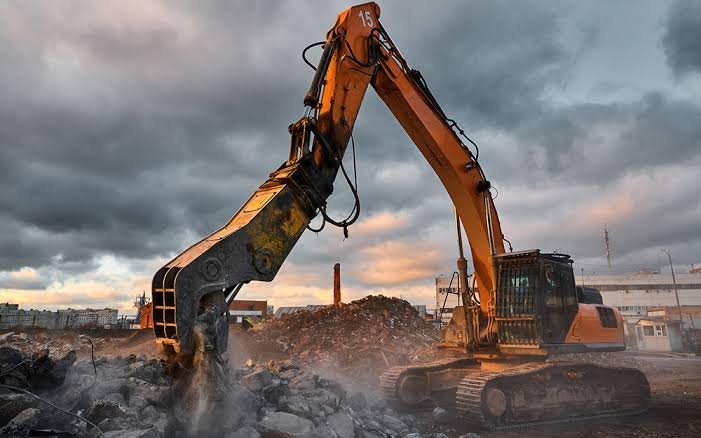Key Takeaways
- Industrial demolition encompasses a range of strategies, from traditional techniques to cutting-edge methods that enhance efficiency and safety.
- Innovative demolition techniques involve advanced technologies such as robotics and explosive demolition, reshaping how industries approach teardown projects.
- Safety remains a top priority, with modern practices emphasizing worker protection and environmental sustainability.
Table of Contents
- Understanding Industrial Demolition
- The Shift to Modern Demolition Techniques
- Exploring Advanced Technologies
- The Role of Safety in Demolition Projects
- Environmental Considerations and Sustainability
- Case Study: Successful Demolition Projects
- Industry Trends and What Lies Ahead
Industrial demolition has evolved significantly in recent years, transitioning from basic removal techniques to sophisticated strategies incorporating advanced technology and sustainable practices. As urban landscapes expand and obsolete structures make way for new developments, the role of modern industrial demolition contractors becomes increasingly crucial. These experts employ innovative methods to ensure projects are carried out efficiently and safely, setting a new standard in the industry, balancing thoroughness with rapid execution, and prioritizing both safety and environmental responsibility.
Understanding the nuances of industrial demolition is key to appreciating its impact on our built environment. From initial site assessments and risk analyses to the actual teardown and resulting debris management, contractors employ a comprehensive approach to dismantling large-scale structures. This article delves into the various facets of industrial demolition, examining how cutting-edge techniques and a focus on safety and sustainability reshape the field, transforming once daunting projects into streamlined operations.
Understanding Industrial Demolition
Industrial demolition involves strategically removing structures such as factories, power plants, and old industrial facilities. Historically, these tasks were carried out using essential tools and manual labor, focusing on raw dismantling rather than precision and environmental impact. However, as urban areas continue to expand and the need for more efficient land use grows, there is a pressing demand for techniques that allow the repurposing of land quickly and sustainably.
The importance of this field cannot be overstated, as it plays a vital role in urban regeneration, making space for new, more efficient infrastructure. As cities become more innovative and sustainable, demolition is not just about destroying but rather about strategic deconstruction, which considers future land use and minimizes disturbances in nearby communities.
The Shift to Modern Demolition Techniques
Modern demolition techniques have revolutionized how we approach the deconstruction of industrial structures. This shift is characterized by a move towards efficiency and precision, allowing projects to be completed significantly faster and with less waste. Integrating sophisticated machinery and methods, such as explosive demolition and high-reach excavators, significantly streamlines processes, reducing the project timeline and the environmental footprint.
The benefits of modernization can be traced through a historical perspective on these advancements, illustrating their substantial impact on the field. These innovations enable a strategic approach to demolition that is as much about careful planning and execution as it is about innovative teardown techniques.
Exploring Advanced Technologies
Incorporating advanced technologies has been key in driving modern demolition practices forward. Robotics and automation play a critical role in performing hazardous tasks and reducing human risk exposure. Automated technologies ensure consistency in handling complex demolition tasks. Meanwhile, drones provide an aerial view for site inspections, offering high-resolution imaging that enhances data collection and informs strategic planning. Explosive demolition continues to evolve, giving precision and control essential for demolishing specific structure sections without affecting the entire edifice. Technology trends in demolition highlight how these innovations are revolutionizing the industry, making it safer and more efficient.
The Role of Safety in Demolition Projects
Safety remains the cornerstone of all demolition projects. Contractors adhere to strict protocols, utilizing equipment that enhances worker protection. High-visibility gear, protective headgear, and secure machinery are standard in minimizing hazards. The industry invests heavily in continuous training programs to ensure safety standards evolve alongside technological advancements and changing work environments. Case studies of past incidents underscore the importance of robust safety measures and preparedness. By understanding the lessons from past accidents, the industry continues to refine its strategies, embedding best practices into everyday operations to prevent recurrence and ensure safer working conditions for all personnel.
Environmental Considerations and Sustainability
Environmental sustainability is a significant consideration within the demolition industry. Modern practices emphasize recycling materials and minimizing waste on-site. This approach reduces the project’s ecological footprint and contributes to broader sustainability goals. Techniques for dust suppression and managing hazardous materials, such as asbestos and lead, are implemented to protect the environment. The focus on sustainability extends beyond immediate environmental impact, contributing to long-term ecological benefits. By repurposing materials and employing energy-efficient technologies, demolition projects can align with global sustainability initiatives, burdening less on natural resources while preparing the site for future, more eco-friendly development.
Case Study: Successful Demolition Projects
A case study of a thriving industrial demolition project offers valuable insights into best practices. Consider the teardown of an old manufacturing facility where advanced techniques were employed from initial planning to completion. Strategic use of technology and safety measures ensured that the project met deadlines and adhered to high sustainability standards. The project exemplified how incorporating historical insights and modern innovations can optimize outcomes, creating a harmonious balance between efficiency and ecological responsibility. Such case studies provide blueprints for future demolitions, emphasizing the essential elements to handle complex industrial projects effectively and safely.
Industry Trends and What Lies Ahead
Looking ahead, the demolition industry is expected to continue embracing innovation. Emerging trends include further advancements in automation, enhanced materials recycling techniques, and the integration of artificial intelligence in planning and operational phases. Continued collaboration between technology developers, environmental experts, and contractors is crucial for evolving the industry in ways that support both economic and ecological goals. Through proactive adaptation and innovation, industrial demolition will remain a pivotal component in the construction and redevelopment sectors, opening doors for a more sustainable and efficient future in built environments.

